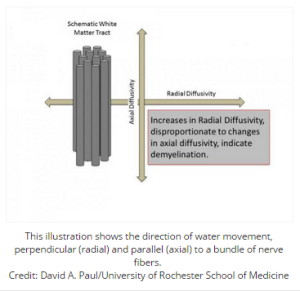
Black children are less likely to be diagnosed with and less likely to receive broad-spectrum antibiotics for ear infections than white children are, a new study has found. But the discrepancy in prescribing fewer broad-spectrum antibiotics means black children actually are more likely to receive care that aligns with the recommended guidelines for treating ear infections.
Two explanations for the observed disparities in care are overtreatment and overdiagnosis in white children, and undertreatment and underdiagnosis in black children. Addressing behaviors that contribute to these findings may cut down on differential care and antibiotic overuse, both significant public health concerns.
Led by researchers at the University of Utah, Emory University, and the Centers for Disease Control and Prevention (CDC), the study appears online in Pediatrics.
“These findings raise the possibility that physicians bring with them to the exam room cultural and racial biases that influence how they make a diagnosis and prescribe antibiotics,” says senior author Adam Hersh, M.D., Ph.D., assistant professor of pediatrics at the University of Utah School of Medicine.
Examination of medical records from across the nation shows that when children were brought to the doctor for upper respiratory infections that commonly lead to ear infections, 30 percent fewer black children (African-American and other black racial backgrounds) were diagnosed with ear infections compared to other children (95 percent white, 5 percent of other non-black racial backgrounds). Once diagnosed with an ear infection, black children were 20 percent less likely to receive a prescription for broad-spectrum antibiotics.
The results indicate that, whether intentional or not, black children are more likely to receive care that aligns with current ear infection treatment guidelines, which specifically recommend a prescription of narrow-spectrum antibiotics, rather than broad-spectrum antibiotics, as first-line treatment. What’s more, fewer ear infection diagnoses among black children suggest that in some cases, ear infections may be overdiagnosed in other children.
“These findings may indicate racial differences in the diagnosis of otitis media,” says first author Katherine Fleming-Dutra, M.D., pediatric emergency fellow at Emory University and Children’s Healthcare of Atlanta. “Additionally they may reflect inappropriate treatment of otitis media with the use of broad-spectrum antibiotics in a majority of U.S. children.”
Guidelines for treating ear infections have been updated in recent years in an effort to confront antibiotic overuse. Ear infections can be difficult to accurately diagnose, and it can be hard to distinguish bacterial from viral infections. Physicians sometimes err on the side of prescribing antibiotics when the diagnosis is uncertain, even though they are ineffective against viral infections. Overprescribing antibiotics, and unnecessary use of broad-spectrum antibiotics, can lead to adverse side effects such as severe diarrhea, and development of antibiotic-resistant bacteria.
“The use of antibiotics is the single most important driver of antibiotic resistance. Further, ear infections lead to more antibiotic prescriptions in the United States than any other diagnosis,” says co-author Lauri Hicks, D.O., medical director of Center for Disease Control’s Get Smart: Know When Antibiotics Work program. “By increasing our knowledge base about antibiotic prescribing behaviors, we can develop tools and interventions to improve antibiotic prescribing.”
The results were derived from a sample of 15,694 doctor visits for respiratory infections and 4,178 visits for ear infections made by children age 14 years and younger between the years 2008 to 2010. The samples extrapolate to a national estimate of 23.5 million, and 6.4 million annual visits, respectively.
Though not directly addressed by the study, one explanation for disparities in treatment are biases toward children and families of different races. “Overtreatment and overdiagnosis could result from the possibility that in some circumstances, parents may expect an antibiotic prescription, or physicians may perceive that they do,” says Hersh. “Physicians may tailor their diagnosis based on these perceptions of patient expectations.”
Another explanation, underdiagnosis of ear infection and undertreatment with broad-spectrum antibiotics, could result from a number of factors including differences in how frequently parents of black children seek care for their children with respiratory infections, or return for follow-up visits. Racial differences in the reported rate of medication allergies could also influence the choice of antibiotics.
The authors found that equal proportions of black children and children of other races made visits to the doctor for respiratory infections, suggesting that lower rates of ear infection diagnoses in black children are not the result of decreased access to care. But limitations to the analysis include an inability to determine whether the visits were first or follow-up visits, and whether patients had allergies, both of which could impact treatment.
“It is important to understand why certain children are not getting guideline-recommended antibiotics so that we can focus public health efforts to help providers improve their diagnosis and selection of antibiotics for children with otitis media,” says Fleming-Dutra.
http://www.medicalnewstoday.com/releases/285552.php
Picture courtesy to articles.mercola.com
 Conscientious children are less likely to smoke in later life and the personality trait could help explain health inequalities, indicates a study published in the Journal of Epidemiology & Community Health.It is well known that people belonging to lower socio-economic groups have lower life expectancy and more health problems than those who are in higher groups, and certain health behaviours, such as smoking, follow a similar pattern, suggesting they could be partly responsible for health inequalities.Recently, certain personality traits have been found to be associated with health outcomes and health behaviours and to follow a similar social gradient to smoking and health outcomes. In particular, conscientiousness, the tendency to be self-controlled, dutiful, reliable and achievement oriented, has been linked to longer life expectancy and certain health behaviours. However, it is has not been clear whether conscientiousness is a cause or consequence of social inequalities.
Conscientious children are less likely to smoke in later life and the personality trait could help explain health inequalities, indicates a study published in the Journal of Epidemiology & Community Health.It is well known that people belonging to lower socio-economic groups have lower life expectancy and more health problems than those who are in higher groups, and certain health behaviours, such as smoking, follow a similar pattern, suggesting they could be partly responsible for health inequalities.Recently, certain personality traits have been found to be associated with health outcomes and health behaviours and to follow a similar social gradient to smoking and health outcomes. In particular, conscientiousness, the tendency to be self-controlled, dutiful, reliable and achievement oriented, has been linked to longer life expectancy and certain health behaviours. However, it is has not been clear whether conscientiousness is a cause or consequence of social inequalities.







